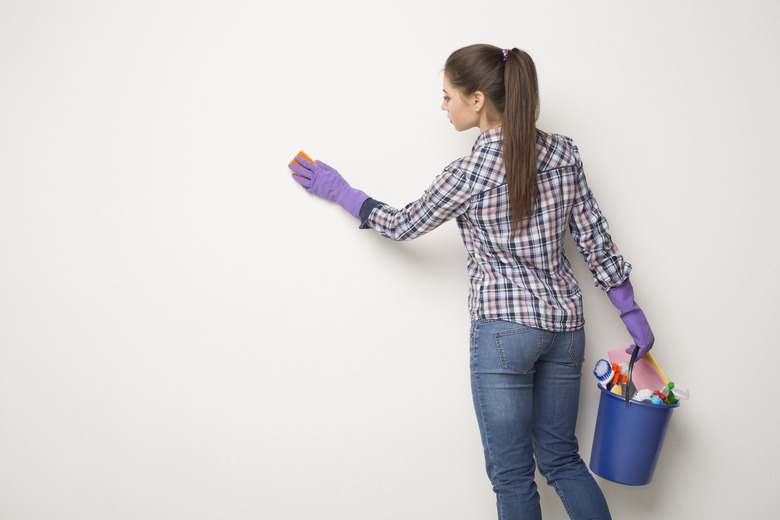How To Clean Walls With Vinegar Before Painting
We may receive a commission on purchases made from links.
When you decide to spruce up a drab or boring room with new paint, the excitement of the transformation makes you want to dip right into the paint can and start working. Before you roll that first hint of color onto the wall, however, you need to do some prep work for better results. Cleaning your walls is one of those steps, and vinegar is an inexpensive and effective cleaning solution that works on walls.
Importance of Cleaning Your Walls
Importance of Cleaning Your Walls
Cleaning your walls before painting removes any dust, grease, and other gunk that could interfere with the paint adhering. It's a safe bet to at least gently clean the walls in any room, but it's especially important if the walls are particularly dirty. Kitchens and bathrooms almost always need to have the walls washed before painting. Your kitchen walls could have grease and food splatters on them, while bathrooms may have grime or hairspray.
If you don't wash your walls before painting, you run the risk of the paint not sticking, which can result in bubbling or peeling paint on your freshly painted walls. You could also have little bumps in the finished paint where chunks of food or other debris become embedded in the paint. Cleaning your walls gives you a smooth, professional-looking finish that lasts.
Prepare for Cleaning the Walls
Prepare for Cleaning the Walls
Remove all artwork and other items from your walls before you wash them with vinegar. It's also a good idea to take down your curtains or other window coverings to avoid getting vinegar or paint on them. Move furniture away from the walls. While vinegar shouldn't damage most furniture, you don't want to take chances. A razor blade works well if you need to remove tape or other adhesives on the wall before washing it.
The smell of vinegar isn't toxic, but it can be overwhelming. Opening a window or turning on the exhaust fan can help. Before you start cleaning the walls with vinegar, run a duster over the walls to remove loose dirt and cobwebs. It's easier to clean them off with a duster while they're dry than to smear around dust that's wet.
Clean Your Walls With Vinegar
Clean Your Walls With Vinegar
Vinegar is gentle enough to leave the paint intact yet effective at removing dirt and gunk that's on the paint. The steps to wash walls with vinegar cleaner include the following:
- Dilute the vinegar by adding equal parts of distilled white vinegar and warm water in a bucket. You can also add a few drops of dish soap to the mix for extra cleaning.
- Wipe the walls down with the cleaning solution using a soft sponge or cleaning cloth. Rub gently to avoid removing the paint, which can leave an uneven texture that shows through your new paint.
- Go back over the walls with a clean cloth or sponge and plain water to remove the vinegar residue.
- Let the wall dry completely before you start painting. If you start painting immediately, the moisture left on the walls could cause the paint to blister or promote mold growth.
Once your walls are clean and dry, you can patch any holes or damage you notice.
